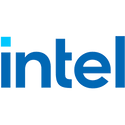Increased Production and Weakened Demand to Drive NAND Flash Prices Down 3-8% in 4Q24
TrendForce's latest findings reveal that NAND Flash products have been impacted by weaker-than-expected seasonal demand in the second half of 2024, leading to a decline in wafer contract prices in Q3. This downward trend is projected to deepen, with prices expected to drop by more than 10% in Q4.
Enterprise SSDs are the only segment likely to see modest price growth—supported by stable order momentum—with contract prices forecast to rise by 0-5% in Q4. However, PC SSDs and UFS will see more cautious procurement strategies from buyers, as weaker-than-expected sales of end products drive buyers to adopt a conservative approach. As a result, TrendForce projects overall NAND Flash contract prices will decline by 3-8% in Q4.
Enterprise SSDs are the only segment likely to see modest price growth—supported by stable order momentum—with contract prices forecast to rise by 0-5% in Q4. However, PC SSDs and UFS will see more cautious procurement strategies from buyers, as weaker-than-expected sales of end products drive buyers to adopt a conservative approach. As a result, TrendForce projects overall NAND Flash contract prices will decline by 3-8% in Q4.


















































